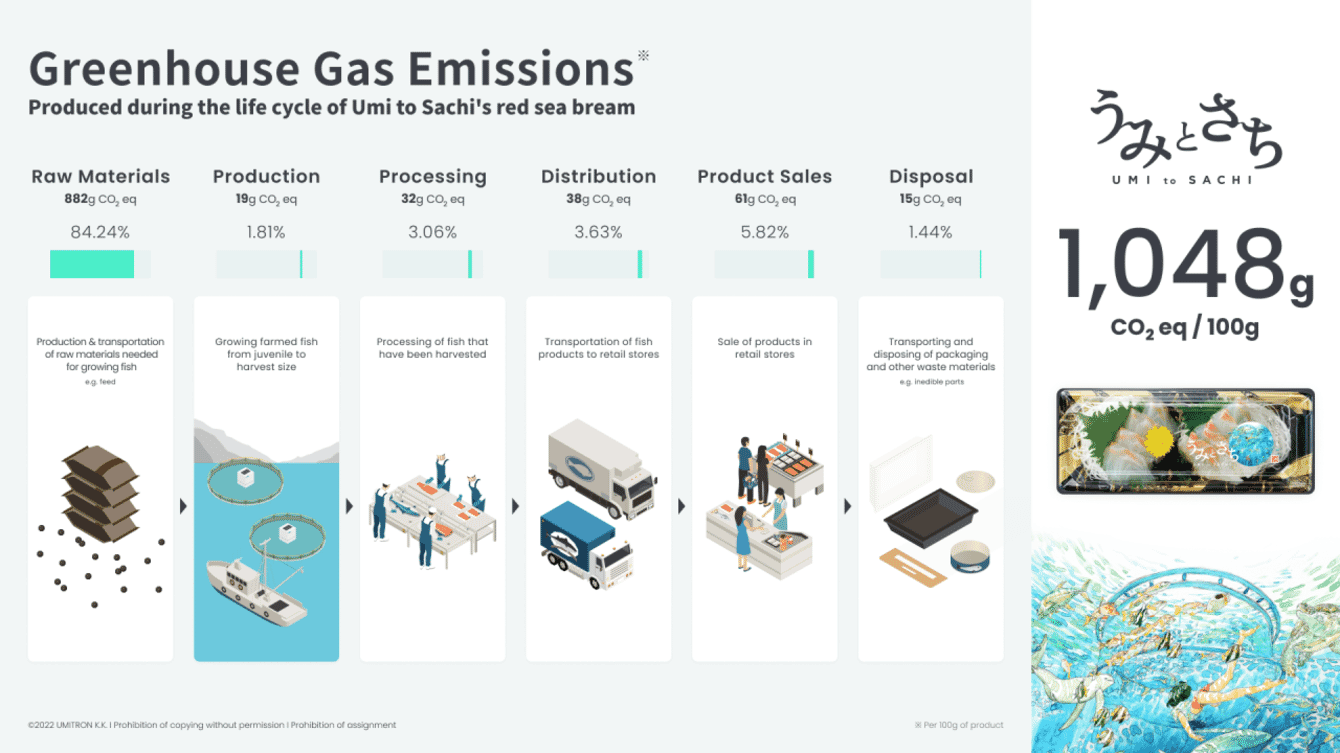So claims Umitron, which has have carried out a lifecycle assessment on the use of Umitron Cell on ASC-certified red sea bream farm in Japan. According to the Japanese/Singaporean startup, their AI-powered smart feeder reduced feed-related GHG emissions by 20 percent compared to conventional automatic feeders.
The assessment measured greenhouse gas (GHG) emissions produced across the product’s value chain, from raw material procurement to end-use and disposal. The life cycle assessment showed that GHG emissions of Umi to Sachi’s ASC-certified red sea bream were approximately 1,048g carbon dioxide equivalent (CO2 eq) per 100 g of product. The analysis results also showed that procurement of raw materials, mainly for fish feed, accounted for more than 80 percent of the product’s total GHG emissions.
When compared against conventional automatic feeders, Umitron Cell was able to decrease GHG emissions by about 20 percent (240g CO2 per 100g of product). This is because it uses an AI-based Fish Appetite Index (FAI) to analyse fish behaviour during feeding and can minimise the amount of feed wastage in the water.
When compared against the carbon footprint for beef produced in Japan, Umi to Sachi’s product had a difference of 1,360g CO2 eq per 100g of product. In the future, Umitron is planning to add more data on GHG reductions for products farmed using Umitron Cell.
“In addition to its continuous journey to develop technologies to improve the farm working environment and the efficiency of fish production, Umitron sees the potential to also contribute to environmental sustainability by helping to reduce the aquaculture industry’s carbon footprint. Furthermore, based on the positive results obtained from this life cycle assessment, the company also plans to include the carbon footprint of the products sold under their Umi to Sachi brand,” said the company in a press release.
“Looking ahead, we want to play a more central role in achieving a low-carbon economy by encouraging consumers to be more sustainability-focused when shopping and choosing more eco-friendly products,” it added.





